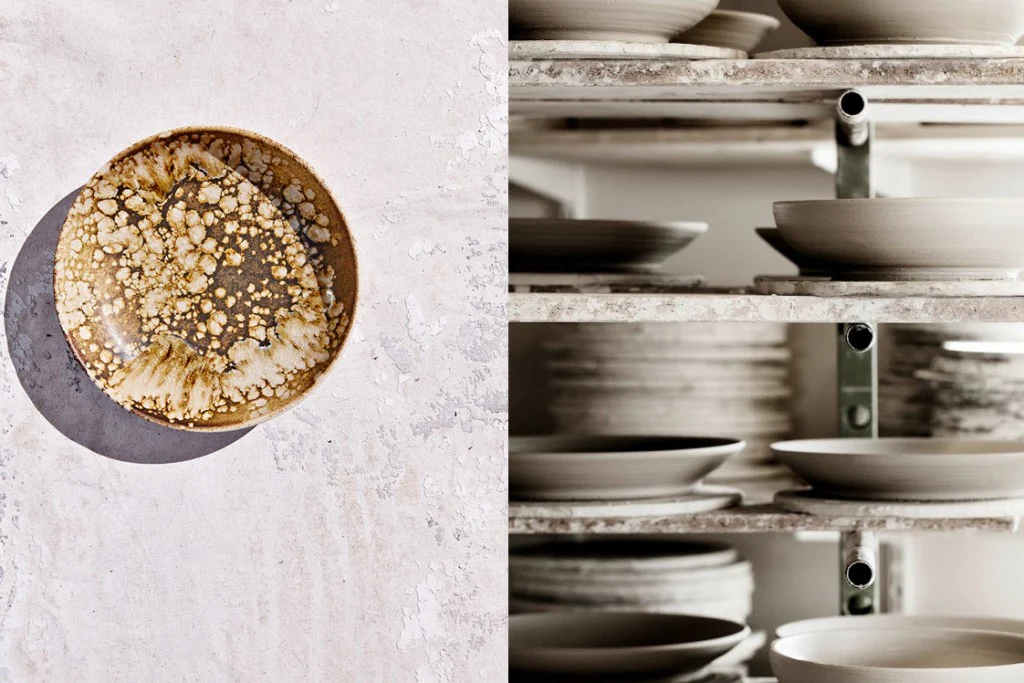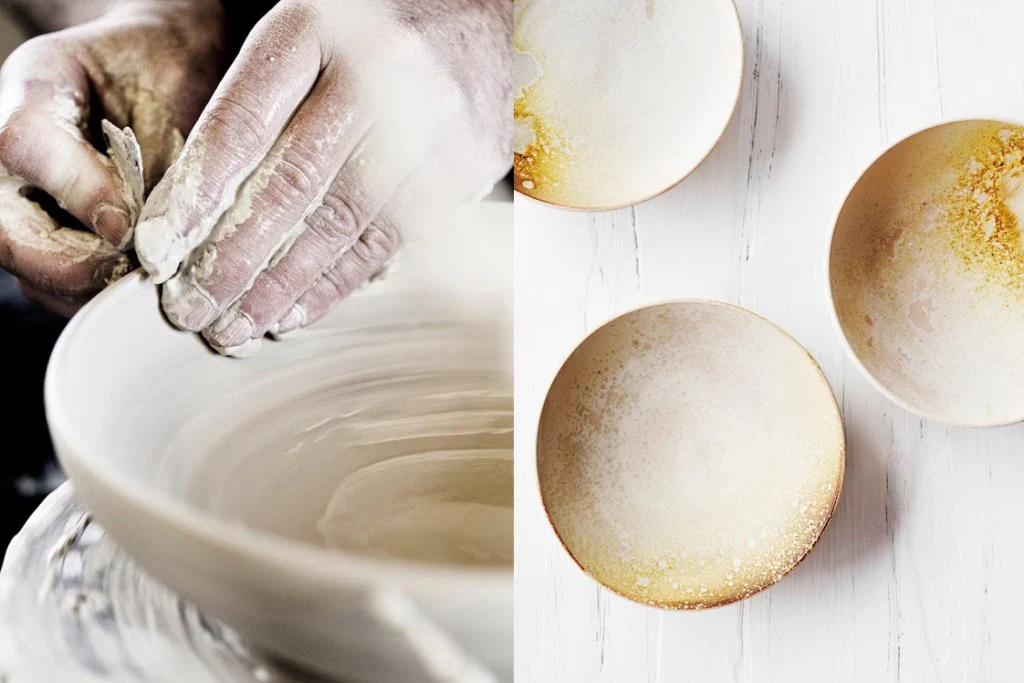KH Wurtz

In one of my favourite books, The Craftsman by Richard Sennet, clay is presented as being the purest of materials and the closest to men itself. This is because in Greek mythology, men were created by Prometheus from dust and water while Athenea breathed the air of life in them. This creation myth is of course found in many other ancient and modern beliefs, from Christianity to ancient Incas -there seems to be a common predisposition to relate the human form to this most basic material. And that is because before there were metal forgeries, before there were glass blowers, pots were being fired in kilns. It is one of the most ancient material techniques known to us where the processing of an existing material results in a different state of the matter itself.
There are so many different varieties of clay, depending on the region and time that there are just as many 'species' of pottery and ceramics. The throwing of clay and all of the small variations in material, handling and finish have been perfected over the centuries. The adding of a glaze or slip sometimes resembles an alchemical process altogether and results in a myriad of hues and finishes. There’s the well known soft green celadon but also the rougher Japanese raku.
The mastering of just a couple of techniques is something that takes years behind the wheel to perfection. Like with most crafts, a master in pottery would usually have an apprentice or two to in his studio. Not much has changed today, because when it comes to learning a technique its best to learn it by hand and not by memory.

In the case of K.H. Würtz , the bond transcends that of master and pupil, Aage and Kasper Würtz are not just father and son, but in that same order they have swapped the roles of pupil and master:
'' K.H. Würtz was formed in 2009, when Kasper and I swapped roles. He took over the leadership and responsibility of glaze development. My responsibility was limited to my core competency: my love for clay on the wheel. The field between the glaze and the shape is a common playground where the energy sparkles. ''
Aage started working as a ceramist in the 70’s, his main inspiration and influences were the Leach’s studio pottery which had gained great recognition for turning away from mass production. Aage started out as an apprentice himself in a Juttland pottery producing ceramic lamps. In the early 80’s he founded his own ceramic studio, but with the arrival of white clinical porcelain in the 90’s, he took a small break – thinking he would escape from the pottery wheel – by the turn of the century however, he intuitively felt that there was a revival for more organic looking ceramics. He took back to the wheel and started doing what he loved the most again, this time with new input from Kasper.

Kasper Würtz had been studying Danish literature at Aarhus University, but he left his studies to join his father’s studio. There he learnt all the specifics first-hand from Aage and turned out to be an innately skilled ceramist. His specialty became the glazing process, which he has enhanced, advanced and updated. Like said before, the glazing procedure can resemble al alchemical test; the mellow colourations and the cracked and speckled textures K.H. Würtz has become so well known for are partly due to Kasper’s tirelessly attempts in pigment-mixing and dipping. He often adds extra elements such as crystals and iron fillings tossed or applied with a sponge or spray gun. When they find a finish they love, they will try to re-enact it over and over:
'' Before the burning process, we add unstable elements. The transformation of the final firing increases glaze variations with an element of happenstance. The most beautiful ‘happenstances’, we seek humbly to repeat again day after day. As a counterweight, we have the fixed firing temperature as the balancing system on the edge of a knife. It is the best place to work in our search for perfection, with the stable firing as a set point. ''

Kasper is also the company’s business head and creative development strategist, he strives to expand the company without having to sacrifice the quality or attention to detail. Their big “breakthrough” moment came when they were contacted by René Redzepi from the world renowned restaurant Noma. They started to craft custom made plates for the dishes of the restaurant in 2006, Noma’s approach to food and its presentation resonated deeply with the values of K.H. Würtz. The experience filled them both with pride and humility as they were honoured to see their ceramics being used day after day rather than sitting on shelves collecting dust. When asked what he will do tomorrow, Aage simply answers:
'' Tomorrow, I will do my best to make the perfect piece of pottery. And work toward that the knowledge of the production of our craft can remain alive – so KH Würtz may maintain its vitality moving forward. ''
More of K.H. Würtz’s ceramics can be seen on their website.
Interview excerpts are taken from The Art of Plating.
Pics by Gentl & Hyers and Stine Christiansen.
Words by Sara Martín Mazorra.


